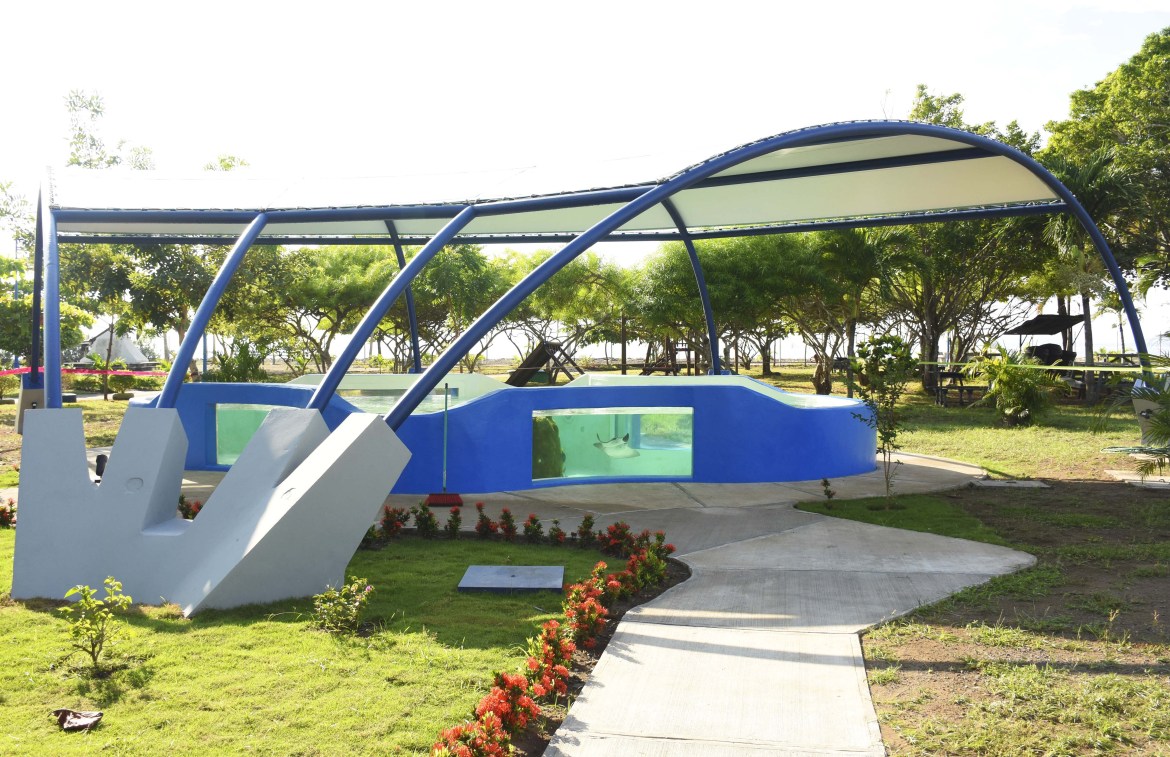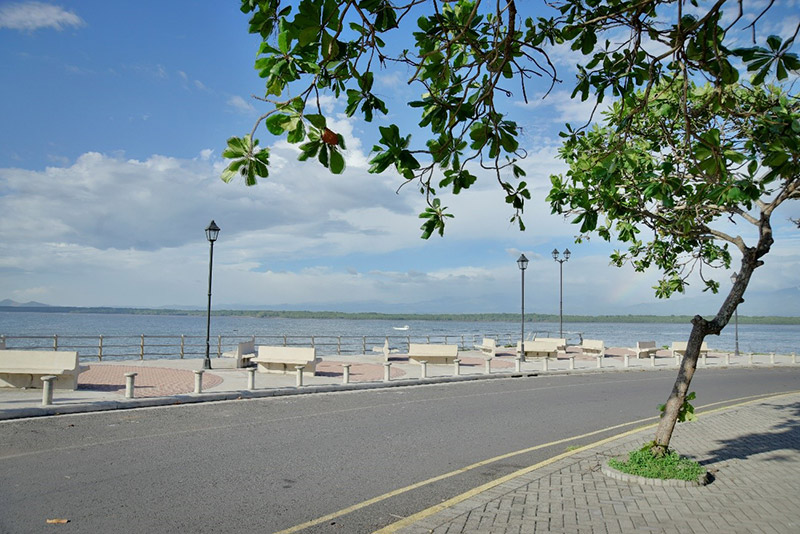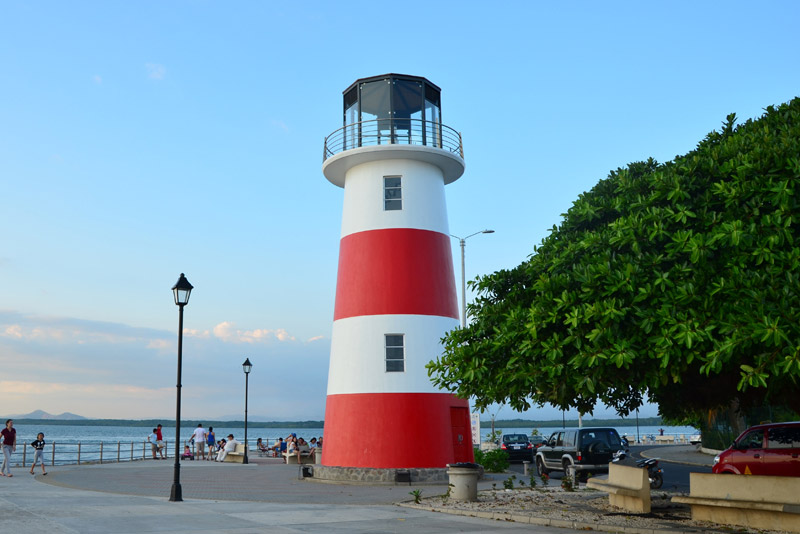Costa Rica has little experience in concessions and public-private partnerships (PPP), especially when it is compared to other Latin American countries such as Chile, Colombia, Mexico or Argentina.
The port concession is an administrative contract that is made between the State, through the Port Authority, with a private port company, so that it occupies and uses, temporarily and exclusively, the port facilities, the roadstead, the land and access areas, generally for the construction and operation of a port. In return, the benefited company gives an economic consideration in favor of the State, with additional benefits in the municipalities where the port operates.
The General Public Works Concession Law (# 7404) was approved on May 3, 1994, with the purpose of having an alternate financing source to meet the growing demands of the transportation infrastructure sector.
This lack of experience meant that some of the first concession contracts there had mistakes in the contracting and financing mechanisms. Fortunately, from mistakes anyone can learn, and today the country has a strong and experienced National Council of Concessions (CNC), which has achieved important improvements in new contracts, particularly in terms of structuring, improvements in the distribution and allocation of risks, reduction of cost overruns and elimination of guaranteed minimum income.
Pond of rays, Marine Park of Puntarenas.
The first of the port concessions in Costa Rica was in 2006, by the Costa Rican Institute of Ports of the Pacific (called INCOP in Spanish), for the operation of the Caldera port, located in the province of Puntarenas.
The second port concession was granted to APM Terminals in 2011, by the Port Administration and Development Board of the Atlantic Coast (called JAPDEVA in Spanish), to build and operate, during the following 33 years, a new terminal in the Moín community, located in the province of Limón.
In these cases, the main objective was also to improve their port services, bring them to better conditions of efficiency and competitiveness, but there was also the interest to strengthen the urban development of Puntarenas and Limón, thinking that these investments would facilitate socioeconomic development for both cities.
Case: Puntarenas
The Caldera port concession involved three contracts: one for concession of public works, with public services for the construction and operation of a bulk terminal; another one of management of public services of the terminal of port Caldera and; the third, of public services management of tugboats in the Pacific slope.
In general, this concession has been successful in terms of financial returns. In addition, it generated greater cargo volume and greater operational efficiency; decreasing the times of anchoring, the gross times of quay and of operation. However, it is a company with very little activity in the area of corporate social responsibility and low incidence in the generation of employment. Due to the above, it could be considered that the social and regional impact of this concession has been low.
Plaza Espigones, Puntarenas.
Besides, between 2006 and 2018, INCOP has received, for the concept of the port concession fee, an amount of approximately fifty-three million dollars. Of this amount, in that period, nearly eighteen million dollars have been transferred to a trust created with the purpose of investing in infrastructure works with tourist vocation (Law No. 8461). Up to now, almost thirteen millions of dollars have been invested in projects of great value for urban and tourist development.
All these projects have responded to a need felt by some social actor: the INCOP, the Tourism Promotion Board, the Ministry of Tourism, the local government or some other.
Sometimes they were projects that did not respond to a development plan or presented little articulation with the environment. However, in 2017 a map of tourism investments was created, considering the impact of these and the cultural value of the tourism product generated.
Also the year 2017 marked an important difference, because it created and regulated the Interinstitutional Commission of the Trust (CIF), defined the assets of greater value for the port city and, an investment line was drawn up with which it is expected to strengthen the maritime front and rescue the natural and cultural heritage.
Case: Limón
The port concession made by JAPDEVA in 2011, allows Costa Rica to make a significant generational leap in port matters.
The ports of Costa Rica have been characterized by offering very basic services with few technological applications. However, the new terminal, which will start operations in early 2019, could have a fourth generation profile. That is, it would be a port that is part of a network through a large operator, and that would be integrated into that multimodal transport network through Logistics Activity Zones, interior terminals, connections with port terminals around the world and advanced computer systems.
The lighthouse, Puntarenas.
It should be noted that, through the Caribbean ports of Costa Rica, more than one million containers are transported per year, and a total of 11.5 million tons of cargo. The Port Concession transfers most of this cargo to the concessionaire, but the granting Authority will receive a fee of approximately twenty million dollars per year, for a little more than thirty years.
The current general manager of the concession company APM Terminals in Moin, has expressed concern about the lack of an investment plan in the Port Authority. The concessionaire proposes that with these resources could be built industrial parks, a cruise terminal, with a broad concept of tourism service or a tax-free zone, all this in order to generate employment.
But since 2008, Limón has had an important package of urban infrastructure projects, which were raised in the failed “Limón Ciudad Puerto” project. The total investments at that time amounted to eighty million dollars. If they decided to attend to them, they would already have a five-year plan.
However, today reality is different, transformed by a decade of social changes and a new budget that allows us to draw other more ambitious scenarios, for a city as extraordinary as Limón.
The best way for cities with ports in concession
Since several institutions and organizations participate in each infrastructure project such as the Trust Commission, the Port Administration Board, the Mayor of the city, the Municipal Council, the Ministry of Tourism, and many others, it is important to create sessions of work, with the aim of keeping everyone informed, of the goals on which you are working or want to work.
Mural of the San Rafael Clinic, Puntarenas.
It is important to reevaluate the Urban Regulatory Plan that each port city possesses, involving experts from different disciplinary areas, as appropriate, because the projects must respond to a plan and be linked to the economic, social and cultural development objectives of the city. Likewise, they should stimulate the growth of the tourism industry, as well as guarantee training and support for the functioning of SMEs and emerging ventures.
Limón and Puntarenas are cities with a lot of development potential, abundant nature, history, culture and friendly people that make them perfect destinations for the cruise industry. Both cities deserve better public and private management efforts to improve their current socioeconomic conditions.
Head Image: Photographic parador, Puntarenas.
Concesiones portuarias e impactos en el desarrollo de las ciudades portuarias de Costa Rica
Costa Rica tiene poca experiencia en materia de concesiones y alianzas público privadas (APP), especialmente si se le compara con otros países latinoamericanos como Chile, Colombia, México o Argentina.
La concesión portuaria es un contrato administrativo que se realiza entre el Estado, a través de la Autoridad Portuaria, con alguna sociedad portuaria privada, para que esta ocupe y utilice, en forma temporal y exclusiva, las instalaciones portuarias, la rada, los terrenos y zonas de acceso, generalmente para la construcción y operación de un puerto. A cambio, la empresa beneficiada da una contraprestación económica a favor del Estado, con beneficios adicionales en los municipios en donde opere el puerto.
La Ley General de Concesión de Obra Pública (# 7404) fue aprobada el 3 de mayo de 1994, con el propósito de contar con una fuente de financiamiento alterna, para satisfacer las crecientes demandas del sector de infraestructura de transportes.
Dicha falta de experiencia hizo que algunos de los primeros contratos de concesión presentaran fallas en los mecanismos de contratación y financiamiento. Afortunadamente, de los errores se aprende, y hoy el país cuenta con un Consejo Nacional de Concesiones (CNC), robusto y experimentado, que ha logrado mejoras importantes en los nuevos contratos, particularmente en temas de estructuración, mejoras en la distribución y asignación de riesgos, disminución de sobrecostos y eliminación del ingreso mínimo garantizado.
Estanque de rayas, Parque Marino de Puntarenas.
La primera de las concesiones portuarias en Costa Rica se dio en el año 2006, por el Instituto Costarricense de Puertos del Pacífico (INCOP), para la operación del puerto Caldera, ubicado en la provincia de Puntarenas.
La segunda concesión portuaria fue otorgada a APM Terminals en el año 2011, por la Junta de Administración Portuaria y Desarrollo de la Vertiente Atlántica (JAPDEVA), para construir y operar, durante los siguientes 33 años, una nueva terminal en la comunidad Moín, ubicado en la provincia de Limón
En estos casos de INCOP y JAPDEVA, el objetivo principal también fue de mejorar sus servicios portuarios, llevarlos a mejores condiciones de eficiencia y competitividad, pero además, se tuvo el interés de fortalecer el desarrollo urbano de Puntarenas y Limón, esperando que estas inversiones facilitaran el desarrollo socioeconómico de ambas ciudades.
El caso de Puntarenas
La concesión del puerto de Caldera implicó tres contratos: uno de concesión de obra pública, con servicios públicos para la construcción y operación de una terminal granelera; otro de gestión de servicios públicos de la terminal de puerto Caldera y; el tercero, de gestión de servicios públicos de remolcadores en la vertiente del Pacífico.
Esta concesión ha sido exitosa en cuanto a los rendimientos financieros. Además generó mayor volumen de carga y mayor eficiencia operativa; disminuyendo los tiempos de fondeo, los tiempos brutos de muelle y de operación. Sin embargo, se trata de una empresa con muy poca actividad en el tema de responsabilidad social empresarial y baja incidencia en la generación de empleo. Por lo anterior, podría considerarse que el impacto social y regional de esta concesión ha sido bajo.
Plaza Espigones, Puntarenas.
Entre el año 2006 y 2018, el INCOP ha recibido, por concepto del canon de la concesión portuaria, un monto aproximado a los cincuenta y tres millones de dólares. De dicho monto, en ese período, se han trasladado cerca de dieciocho millones de dólares a un fideicomiso creado con la finalidad de invertir en obras de infraestructura de vocación turística (Ley N° 8461). Hasta el momento se han invertido cerca de trece millones de dólares en proyectos de gran valor, para el desarrollo urbano y turístico.
Todos estos proyectos han respondido a una necesidad sentida por algún actor social: el INCOP, la Junta Promotora de Turismo, el Ministerio de Turismo, la Municipalidad o algún otro.
En ocasiones fueron proyectos que no respondían a un plan de desarrollo o presentaban poca articulación con el entorno. Sin embargo, el año 2017 se creó un mapa de inversiones turísticas, considerando el impacto de éstas y el valor cultural del producto turístico generado.
También el año 2017 marcó una diferencia importante, porque creó y reglamentó la Comisión Interinstitucional del Fideicomiso (CIF), se definieron los activos de mayor valor para la ciudad portuaria y, se trazó una línea de inversión con la que se espera fortalecer el frente marítimo y rescatar el patrimonio natural y cultural.
El caso de Limón
La concesión portuaria realizada por JAPDEVA en el año 2011, le permite a Costa Rica realizar un importante salto generacional en materia portuaria.
Los puertos de Costa Rica se han caracterizado por ofrecer servicios muy básicos y con pocas aplicaciones tecnológicas. Sin embargo, la nueva terminal, que iniciará operaciones a principios del año 2019, podría tener un perfil de cuarta generación. Es decir, sería un puerto que forma parte de una red a través de un gran operador, y que estaría integrado a esa red de transporte multimodal a través de Zonas de Actividad Logística, terminales interiores, conexiones con terminales portuarias alrededor del mundo y la operación de sistemas informáticos avanzados.
El Faro, Puntarenas.
Cabe señalar que, por los puertos del Caribe de Costa Rica se movilizan más de un millón de contenedores por año, y un total de 11 millones y medio de toneladas de carga. La Concesión portuaria le traslada la mayor parte de esta carga al concesionario, pero la Autoridad concedente recibirá un canon aproximado a los veinte millones de dólares anuales, durante poco más de treinta años.
El actual gerente general de la empresa concesionaria APM Terminals en Moin, ha expresado su preocupación por la ausencia de un plan de inversión en la Autoridad Portuaria. El concesionario plantea que con estos recursos se podrían construir parques industriales, una terminal de cruceros, con un concepto amplio de servicio turístico o una zona libre de impuestos, todo esto con la finalidad de generar empleo.
Pero Limón tiene desde el año 2008 un importante paquete de proyectos de infraestructura urbana, que se plantearon en el fallido proyecto “Limón Ciudad Puerto”. El total de las inversiones en aquel momento ascendía a los ochenta millones de dólares. Si decidieran atenderlos, ya tendrían la planificación de un quinquenio.
Sin embargo, hoy la realidad es otra, transformada por una década de cambios sociales y un nuevo presupuesto que permite dibujar otros escenarios más ambiciosos, para una ciudad tan extraordinaria como es Limón.
El mejor camino para las ciudades con puertos concesionados
Dado que en cada proyecto de infraestructura participan varias instituciones y organizaciones como son la Comisión del Fideicomiso, la Junta de Administración del Puerto, el Alcalde de la ciudad, el Consejo Municipal, el Ministerio de Turismo, y otros tantos, es importante crear sesiones de trabajo, con el objetivo de mantener a todos informados, de las metas sobre las que se está trabajando o se quiere trabajar.
Es importante reevaluar el Plan Regulador Urbano que posea cada ciudad portuaria, participando a expertos de distintas áreas disciplinarias, según corresponda, porque los proyectos deben responder a un plan y estar vinculados con los objetivos de desarrollo económico, social y cultural de la ciudad. Así mismo, deben estimular el crecimiento de la industria del turismo, como también, garantizar capacitación y apoyo para el funcionamiento de PYMES y emprendimientos emergentes.
Mural de la Clínica San Rafael, Puntarenas.
Limón y Puntarenas son ciudades con mucho potencial de desarrollo, abundante naturaleza, historia, cultura y gente amable que las convierten en destinos perfectos para la industria de cruceros. Ambas ciudades merecen mejores esfuerzos de gestión pública y privada para mejorar sus actuales condiciones socioeconómicas.
Head Image: Parador fotográfico, Puntarenas.



